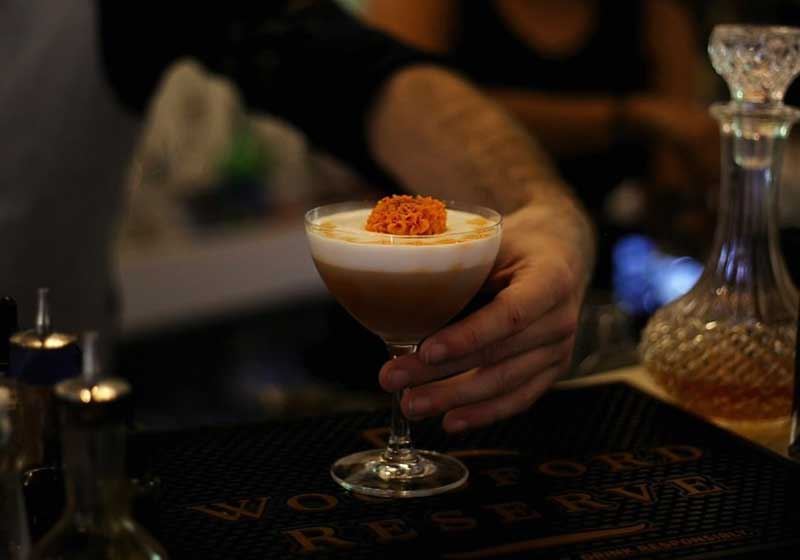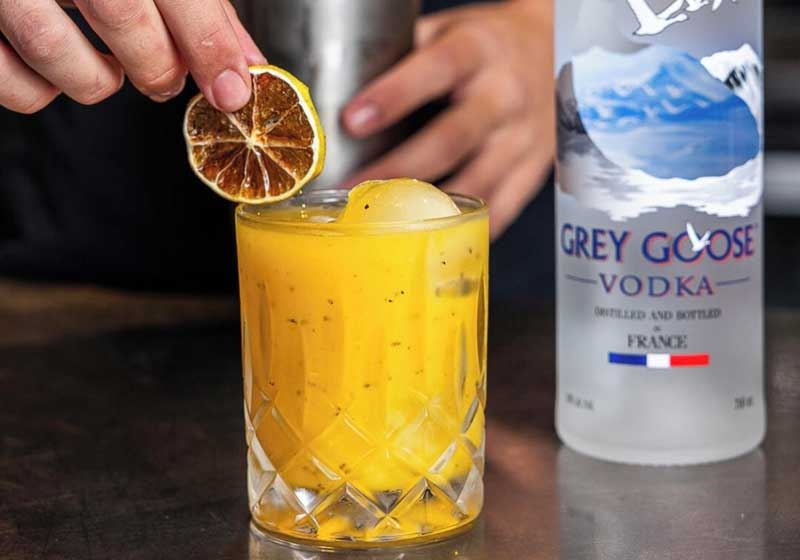By Marie-Antoinette Issa.
From parmis to pies, custard-filled slices to our coat of arms, these iconic Australian foods are a delicious way to celebrate January 26.
Even though the Land Down Under gave the world Chris Hemsworth, The Great Barrier Reef and even wi-fi, it is the country’s culinary contributions that placed us on the global map.
We’re not talking about the fine-dining experience of sea cucumber crackling and caviar under the Harbour Bridge at Sydney’s Quay restaurant; or the macadamia and smoked eel tofu at Vue de Monde in Melbourne. Instead, the list of iconic Australian foods generally features much simpler selections.
The kind that often leaves visitors initially confused…before they eventually come around and embrace these unconventional yet somehow undeniably delicious delights. Among the meals that best represent Australia, are the following:
Vegemite on toast (or Fairy Bread for those with a sweet tooth).
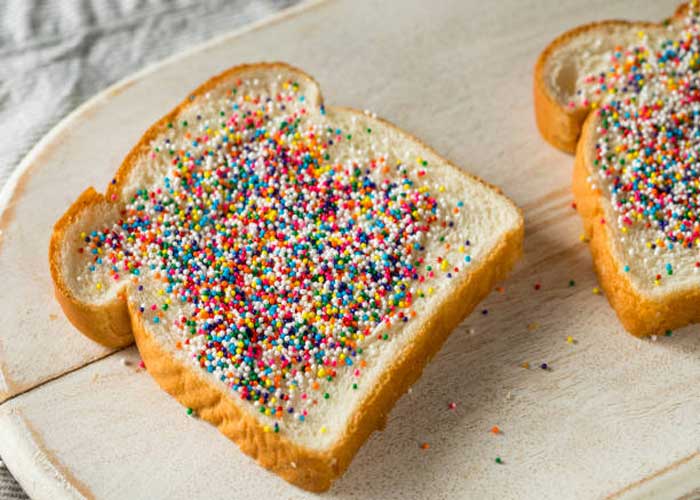
Aussies have quite the reputation for spreading things on slices of soft white bread and calling it a meal. Exhibit one: Vegemite on toast. Listed as an Australian icon by the Department of Foreign Affairs and Trade, this thick, dark brown paste made from leftover brewer's yeast extract was invented in the 1920s by Dr Cyril P Callister.
To best enjoy Vegemite’s umami goodness don’t make the same mistake as Selena Gomez and get stuck into a scoop! Instead, pair a light smear with lashings of butter and possibly a slice of tasty cheese.
Prefer your sangas on the sweet side? Fairy Bread has also positioned itself at the top of the list of iconic Australian foods. While there is no single inventor who can be credited with the creation of slices of bread spread with butter and sprinkled with Hundreds & Thousands, its popularity at many an Aussie kids’ birthday party has made it synonymous with sugar-fuelled celebrations.
Meat pies…preferably from a servo
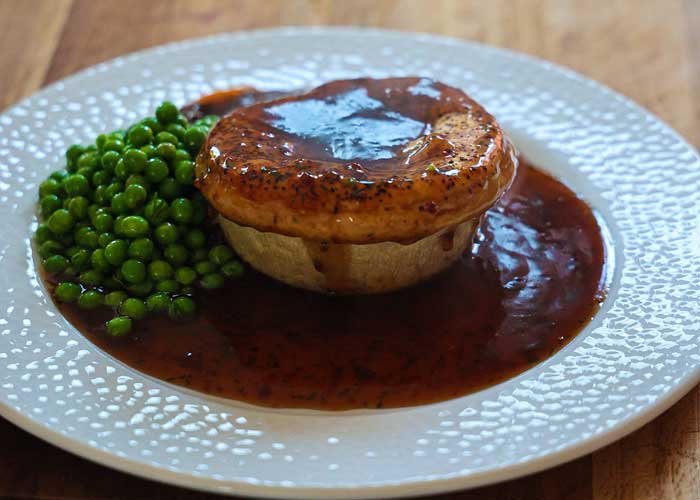
According to historians, pies first arrived in Australia with the European colonists. In fact, they were even on the menu at Sydney’s first official banquet celebrating the King’s birthday in June 1788. Today, whether it's a regional road trip, a primary school tuck shop, or at a local sporting event, biting into a flaky pastry filled with meat - or peeling the lid off and eating its individual components - remains a cherished tradition.
The only thing that’s arguably non-Australian about a meat pie? Retailers who charge you extra for the accompanying squirt of tomato sauce!
Chiko Rolls
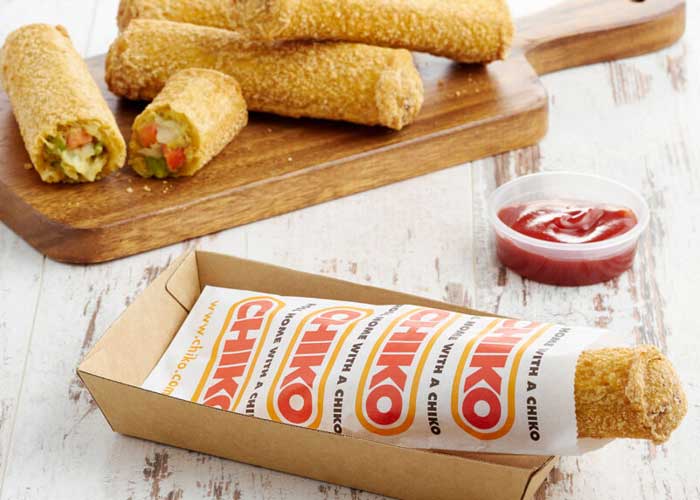
Photo credit: Bidfood.
Before the world wised up to the dangers of deep-fried foods, these treats were a takeaway shop tradition.
Invented by Australian caterer, dairy farmer and food manufacturer, Francis Gerard McEncroe, and inspired by the Chinese spring roll (although filled with beef and vegetables) the Chiko Roll was first sold in 1951 as the ‘Chicken Roll’ - despite not actually containing chicken!
They hit peak popularity in the ‘70s with more than one million exported to Japan and 40 million being sold annually in Australia - mostly at local old-school European-migrant-run takeaway shops. the type that serves up equally nostalgia-inducing iconic Australian foods. Think burgers with the lot - featuring beetroot, bacon, eggs and a slice of pineapple - potato scallops, potato fritters and potato cakes, depending on which state you live.
Sausage sizzles

Paul Hogan may have immortalised throwing a ‘shrimp on the barbie,’ but barbequed snags are just as popular. Frequently found at school fete fundraisers and Saturday morning Bunnings stops, the sausage sandwich truly cemented its status as an iconic Australian food when served as a democracy sausage on election day.
According to Judith Brett, author of ‘From Secret Ballot to Democracy sausage: How Australia Got Compulsory Voting’, sausages first started appearing at polling booths in the early 1980s. (With community organisations viewing voting booths as an opportunity to fundraise with baked goods by taking advantage of the crowds as far back as the 1930s).
More recently, the democracy sausage was even awarded the Australian Word of the Year in 2016, forever cementing its status as a tasty linguistic staple.
Smashed avo on toast with a flat white
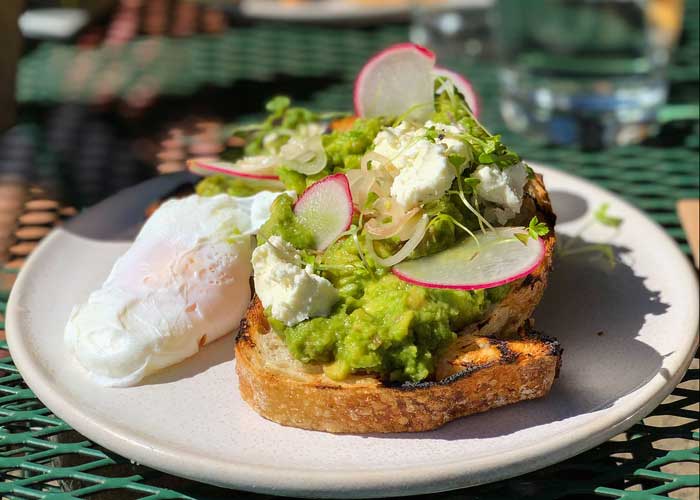
While the actual origins of avo toast are not entirely clear-cut, its popularity as a culinary trend is often associated with the rise of cafe culture - places that started to feature it prominently on their menus - such as Bills, the namesake eatery of the late Bill Granger.
Here it was often paired with other iconic Mod-Oz offerings such as the flat white - a smooth take on caffeine that consists of espresso with steamed milk and a higher coffee-to-milk ratio than a latte.
Trendy, healthy and simple, the combo may have robbed many millennials of the down payment of their first home, but if there is a more delicious way to seamlessly merge breakfast and Saturday morning bonding sessions, we’d love to know.
Fish and chips on the beach
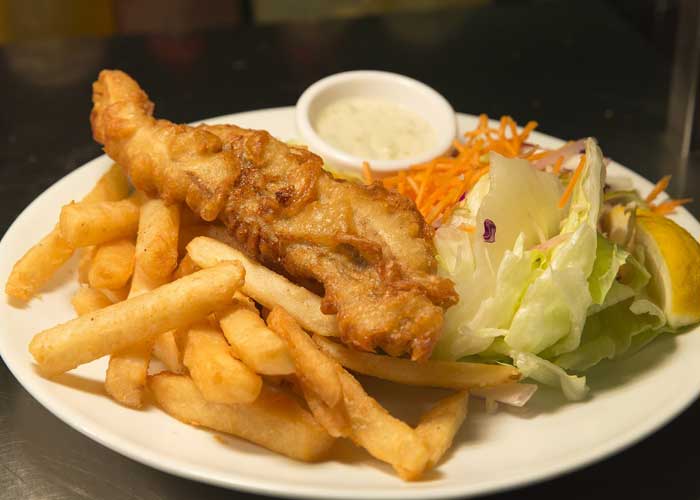
So, technically, it is believed that fried fish was introduced to England by Jewish immigrants from Portugal and Spain in the 17th Century. While chips (or fries) were likely introduced to England as a side dish later, possibly in the 19th Century.
However, if the throngs of tourists are any indication, the best version of this combo can be found in Australia - where fresh fish and chips (battered barramundi - Aboriginal for ‘large-scaled river fish’- is particularly popular) - are a Summertime staple by the beach.
Insider tip: Don’t forget to ask for chicken salt on your chips for a truly authentic Aussie experience.
A parmi (or parma!) at the pub
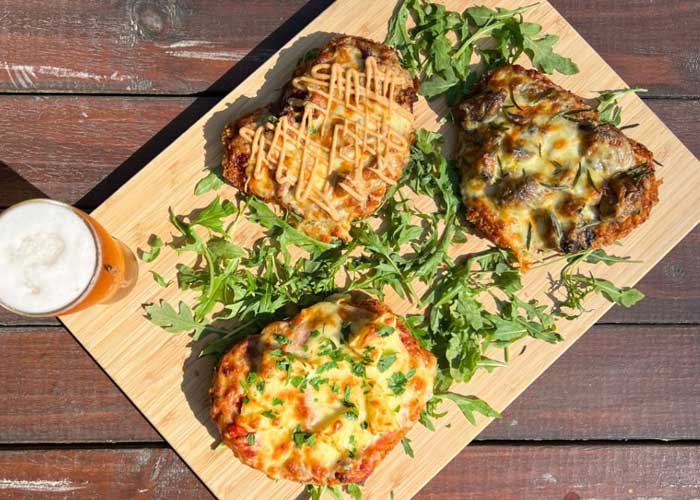
Though it may sound distinctly Italian, the heart of the chicken parmigiana - a beloved pub classic featuring a tender chicken schnitzel crowned with a generous layer of tomato sauce, a slice of ham and a glorious melt of cheese - beats fiercely Australian.
While the origins of this dish’s name may be steeped in debate (we’ll leave it to you to duke out whether it is actually abbreviated to a parma or parmi) there's no disputing its place among iconic Australian foods, with every bite encapsulating the country's love for hearty, unpretentious fare, best paired with a pint.
Brilliant biscuits…
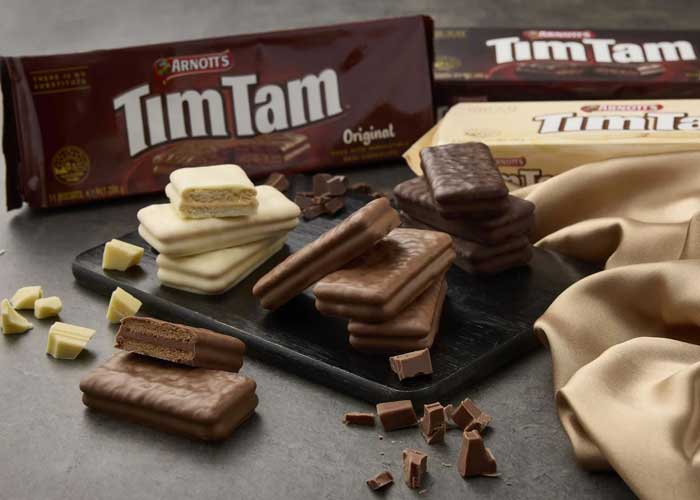
Rule number one: Never call them cookies.
Rule number two: It’s really hard to pick the best biscuit in Australia, but if we had to, then a classic Tim Tam is truly top-tier. Introduced by Arnott’s in 1964, this treat is so beloved that Australians eat about 45 million packets per year.
With the factory in Western Sydney producing 3000 biscuits per minute! The most acceptable way to enjoy a Tim Tam is as a Tim Tam Slam - biting off opposite corners of the biscuit to create a straw-like structure used to ‘slam’ or ‘slurp’ your hot beverage.
Honourable biscuit mentions: The ANZAC, The Wagon Wheel, The Mint Slice and for the savoury set BBQ Shapes
And super sweet and slices…

Leading this category is the pavlova and while the Kiwis will try to allege it as their own (the creation of this fruit-covered meringue is said to have been inspired by ballerina Anna Pavlova's visit to Australia and New Zealand in the 1920s), there is one thing that all Trans-tasmans can agree on - no Summer celebration would be complete without a piece of pav.
Other popular Aussie options for those with a sweet tooth include: the Lamington - named after Lord Lamington, who served as the Governor of Queensland from 1896 to 1901. This was created by accident when his Chef, in an attempt to avoid wasting stale cake, dipped pieces of it in chocolate and desiccated coconut.
The vanilla slice - a custard-filled Australian version of a fancy French mille-feuille, with the decidedly more bogan name of ‘Snot Block’, and the neenish tart - a 1913 creation by Aussie Ruby Neenish who is believed to have topped half her tarts with chocolate icing and the remaining with white icing, upon running out of cocoa.
Our national coat of arms!

Finally, while the idea of feasting on half of our national coat of arms might raise a few eyebrows, kangaroo meat holds a special place in Australian cuisine. Beyond its cultural symbolism, this protein offers a nutritional profile that's hard to beat.
Lean and packed with iron and omega-3 fatty acids, it's a favourite among increasingly health-conscious Aussies. From succulent fillet steaks to fiery sausages, this branch of bush tucker has found its way into both home kitchens and boutique restaurants which combine traditional flavours with contemporary flair.




